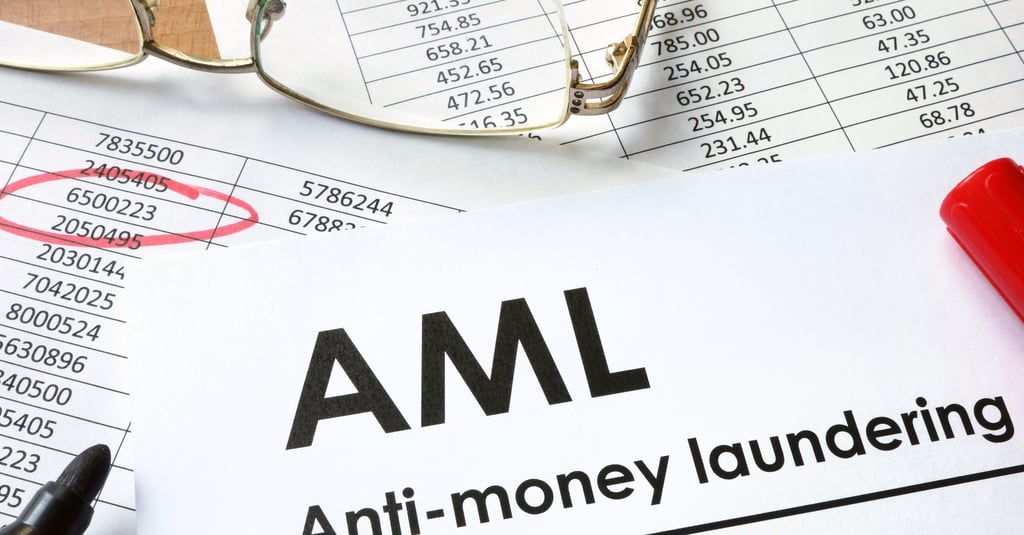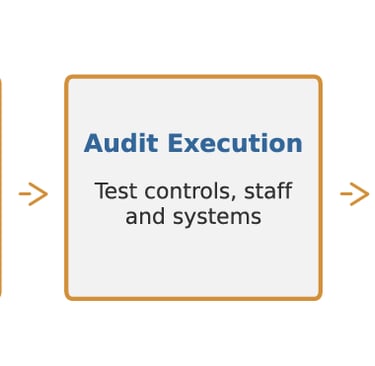Beyond the Checklist: From Regulatory Obligation to Strategic Insight
A proper AML audit goes beyond ticking boxes. In this article, we break down what your audit should cover, why it matters, and how to ensure your controls are effective, up to date, and aligned with both regulatory expectations and your actual risk exposure.
5/27/20253 min read


Anti-money laundering compliance continues to evolve. For Trust and Company Service Providers (TCSPs) and financial institutions, staying ahead of regulatory expectations now requires more than just a written policy. An independent AML audit is not only mandatory but is also a powerful tool to assess whether your systems are working in practice and not just on paper.
Putting AML frameworks to the test
While internal frameworks are essential, they’re not enough on their own. Regulators and auditors are increasingly focused on whether AML controls are embedded across operations. Does your team follow procedures? Are your systems updated to reflect evolving risks? Is your risk assessment meaningful or just a formality?
The 2025 National Risk Assessment (NRA) made it clear that internal controls must be functional, risk-based, and responsive. As part of that shift, independent audits have taken centre stage, becoming one of the most practical ways to verify that your compliance systems are actually protecting your business.
Key Areas to be covered during an AML Audit
The following are mandatory but non-exhaustive areas where compliance must be tested:
AML/CFT policies and procedures
Internal Risk Assessment
Risk Assessment on the use of third-party service providers (Outsourcing)
Compliance Officer function and effectiveness
MLRO function and effectiveness
Implementation and Effectiveness of Mitigating Controls, including customer due diligence and enhanced measures
AML/CFT Training
Record Keeping Obligations
Targeted Financial Sanctions
Suspicious Transaction Monitoring and Reporting
Each of these points is central to a meaningful AML review. But a proper audit doesn’t stop at ticking them off; it digs deeper.
Audits That Go Beyond the Surface
A meaningful audit should provide clarity in addition to compliance. It must go beyond checking for documents and test how well those documents are actually applied in practice.
Here’s what an effective AML audit should cover:
Review compliance with FIAMLA and the FIAML Regulations 2018
Evaluate the overall AML/CFT programme
Check whether systems, policies and procedures match your ML and TF risks
Confirm your AML programme is effective and regularly updated
Review whether risk assessments are adequate and reflect your business activities
Assess if employees follow AML procedures
Test staff knowledge of AML/CFT laws, regulations, and internal policies
Conduct risk-based testing of customer files, including product, service, customer, and geographic factors
Sample-check STR reporting, screening processes, and ongoing monitoring
Assess how well the STR filing process works in practice
Review sanctions screening procedures and how prohibitions and freezing orders are implemented
Ensure sanctions screening is applied promptly at onboarding and during transactions
Review training for accuracy, coverage, and attendance tracking
Identify any gaps in compliance and recommend remedial action
When planned and executed properly, these tests not only offer a checklist of findings but more importantly, real insight.
Planning Your AML Audit: What the Process Looks Like
An effective audit follows a clear structure that considers both money laundering and terrorist financing perspectives. Based on the risks identified in the NRA, audits should be tailored to your institution’s activities, client profile, and exposure.
Phases of an AML Audit - Providing a roadmap for improvement


Our Approach
At VPR, we assist firms in conducting meaningful AML audits that go beyond formalities. Our approach is designed to provide assurance, uncover weaknesses, and support corrective action while helping you stay aligned with regulatory expectations.
We support clients by:
Sketching an audit plan to cover the scope of your audit and its objectives from a ML and TF perspective
Setting out the audit procedures and the documentation required to conduct the audit
Executing the audit plan and making sure all audit objectives are met
Issuing the audit report and outlining recommendations to remedy the deficiencies identified
Making sure you are covered from a legal and regulatory perspective
The value lies in identifying what needs to be fixed and ensuring that your AML systems can stand up to real-world scrutiny.
Need Help Getting Audit-Ready?
AML audits are no longer just technical reviews. They are one of the strongest tools available to ensure your internal controls are resilient, risk-responsive, and ready for regulatory oversight. When done properly, an audit provides peace of mind as well as direction.
If your next audit is due, or if you’re unsure how your current AML systems would measure up, we’re here to help. We can help you close gaps, raise standards, and protect your business. Get in touch now.


